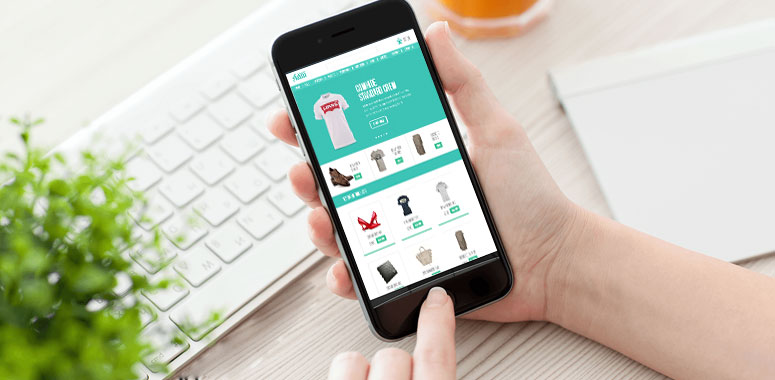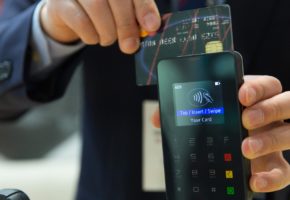
Over the past 20 years, mobile phone technology, the popularity of mobile phones, and online shopping opportunities have steadily increased. Combine these facts together, and you have the makings for a technological revolution in which mobile eCommerce worldwide becomes more popular than ever before. This is happening as we speak. Check out the following statistics courtesy of a 2016 report from Deloitte (a.k.a. Deloitte Touche Tohmatsu Limited) that support the point:
- 93% of consumers utilize their phones while shopping.
- 58% use phones to browse a shopping website or app, with 38% doing so weekly.
- 43% of 25-34-year olds buy products with or through their mobile phones at least weekly.
- Outside of work, 39% of consumers use their phone while shopping, making it the No. 1 leisure activity performed on consumer phones.
It’s good news for businesses that have a strong mobile eCommerce presence, as long as mobile device security issues don’t get in the way of sales. So, what can businesses and consumers do to improve mobile device security? As they participate in a burgeoning mobile eCommerce market, here are some tips and strategies for enhanced security.
 1. What Businesses Can Do
1. What Businesses Can Do
Businesses can do several things to improve the data security of mobile eCommerce. Below are three of the most important measures your business can take to bolster the security of its mobile eCommerce platform.
Become Fully PCI DSS Compliant
Developed by leading payment card companies, Payment Card Industry Data Security Standard (PCI DSS) compliance requires businesses to meet six “control objectives” that underpin 12 PCI DSS requirements.
In the sphere of eCommerce, PCI DSS compliance is commonly discussed in relation to merchant service providers (MSP). However, to achieve full compliance, businesses must also meet the six control objectives and 12 PCI DSS requirements. PCI DSS compliance officers can provide assistance with the technical aspects of pursuing compliance.
Implement Layered Mobile Security
Layered mobile security is what it sounds like: layer upon layer of IT security that increases mobile eCommerce security. If a would-be data thief gets past one security layer, they’re confronted with another one, and then another. Because thieves prefer the path of least resistance, they often abandon the operation when they detect layered security is in place.
As TechMarket explains, “A layered security strategy for mobile devices could include technologies such as device management, mobile application management (MAM), advanced device biometrics, network segmentation, device containerization or antimalware and antiransomware. Also, incorporate monitoring systems and software testing for security-related issues, and apply security patches and updates at regular intervals.”
 Retire Old Devices With Old Programs
Retire Old Devices With Old Programs
Practical Ecommerce touches on the importance of using technology and mobile device security programs that are up to date with the latest compliance measures.
“Some consumers still use lower-end devices running older versions of Android and iOS. This is especially true in South America and Asia, where smartphones and mobile payments are gaining traction, but users can’t afford cutting-edge technology and aren’t well versed in the fundamentals of mobile security.”
Because they can’t yet afford replacements, some people lack the option of retiring obsolete mobile technology. If you can afford better technology — and you’re simply not buying it to save money, realise you could lose a lot more money than you save if a cyber thief lifted you financial information.
2. What Consumers Can Do
There are several measures consumers can do to increase the security of mobile eCommerce, particularly mobile device security. Below are three of the most important measures consumers can take to strengthen mobile device security and enjoy a safer eCommerce experience.
Stay on the Lookout for App Clones
Nefarious clones of popular web applications are developed to make consumers think the apps are legitimate, when the real intention is to imitate apps to gather sensitive financial data or other personal information.
Because ulterior clone apps commonly feature malware, they are usually easy to detect if you have latest anti-malware tools in place. If you don’t have these tools, you detect clone apps by reading the app distribution policies of the legitimate apps they attempt clone.
 As Practical Ecommerce notes, “The most effective method [for businesses to protect customers] against malicious apps is to make it clear in their website that [they] will only distribute applications through mainstream app stores and discourage users from accepting or installing mobile apps coming from other sources.”
As Practical Ecommerce notes, “The most effective method [for businesses to protect customers] against malicious apps is to make it clear in their website that [they] will only distribute applications through mainstream app stores and discourage users from accepting or installing mobile apps coming from other sources.”
Use Special “Lock Down” Features
In addition to attacks that occur over the internet, mobile device security can also be compromised by someone stealing your phone or tablet and browsing through its data. This is why smart device manufacturers equip their devices factory-installed lock down features. Published by IDG Enterprise, CSO offers five helpful tips for locking down smart devices.
End Bad Mobile Device User Habits
Not locking down smart devices is one bad habit that can jeopardize anyone’s mobile device security. Other bad habits include: using browsers that have high fraud rates, not installing phone recovery apps that restore mobile device data when a device is stolen, and not installing web-based wipe applications that let you easily wipe away the data on your device if it’s stolen.
For additional bad mobile device user habits to be aware of, check out this article from IFSEC Global that lists five bad cyber security habits to give up in 2017.
About Our Company
Allied Wallet is a global provider of merchant accounts, personal eWallets, and related services. If your business needs to participate in secure global eCommerce, we’ll help you do it. Our IT infrastructure is PCI DSS compliant and features additional security resources for layering.
In addition to top-notch mobile eCommerce security, we offer accounts that accept 164 currencies and can be used in 196 countries, providing an eCommerce experience that’s truly global in scope. To inquire about our services, call us in the U.S. today at at (888) 255-1137, call us in the U.K. at +44 203 318 8334, or send us an email through our contact form.






